Upstream
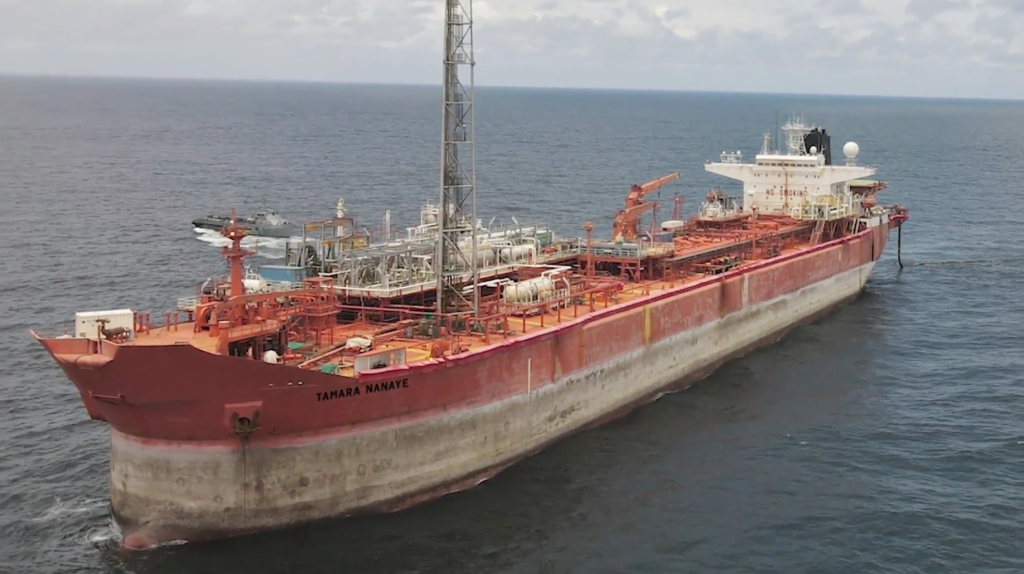
OML 113 transferred to new operating vehicle as partners prepare for gas redevelopment offshore Lagos
After two years of delay, the Nigerian authorities have finally approved PetroNor’s acquisition of Panoro Energy’s subsidiaries in Nigeria, Pan-Petroleum Services Holding BV and Pan-Petroleum Nigeria Holding. The deal was initially inked in October 2019 and had been awaiting government consent since then. Through this acquisition, PetroNor is acquiring Pan Petroleum Aje Ltd, which holds a 6.502% participating interest and 16.255% cost bearing interest in OML 113. This represents a total economic interest of 12.1913% in the license that contains the Aje field offshore Lagos, which produced oil from 2016 to 2021 via the Tamara Nanaye FPSO. Source: DRPC/NUPRC Along with the completion of the acquisition, the Nigeria Upstream Petroleum Regulatory Commission (NUPRC) has also given consent for the transfer of OML 113 to Aje Petroleum AS, a special purpose vehicle owned by Yinka Folawiyo Petroleum (YFP, 55%) and PetroNor (45%). Under the deal, PetroNor will serve as the new technical operator for the redevelopment of Aje into a gas project, on behalf of YFP. The Field Development Plan (FDP) for the new Turonian Aje gas project on OML 113 aims at increasing production to 15,000 barrels of oil equivalent per day (boepd) via the drilling of two new gas producers and one oil producer. It is notably being planned along with the replacement of the Tamara Nanaye FPSO with a new unit able to process increased liquids production and up to 110 MMscfd of gas. This new FPSO could even become a regional field center since it is located around substantial proven resources such as Albian but especially Ogo, a world-class discovery on the neighbouring OPL 310 operated by Optimum Petroleum. The latest plans available had a projected production peak of 26,000 boepd in 2025, with most incremental production being made of gas reserved for power generation and exports through the nearby West Africa Gas Pipeline (WAGP), or supporting LNG production. The partners have set OPEX at about $30m a year, including FPSO bareboat, Operation & Maintenance and G&A. The project is currently at FEED stage and is expecting FID in 2022 at the earliest. Meanwhile, the Tamara Nanaye FPSO stopped producing from the Aje field in November 2021. Hawilti reported earlier this year on its research terminal that the vessel is being refurbished before redeployment at the Kalaekule field on OML 72. It will continue to be operated and maintained by Nigerian services conglomerate Century Group. Details on the development of OML 113 offshore Lagos are available in the “Projects” section within your Hawilti+ research terminal.
Read more »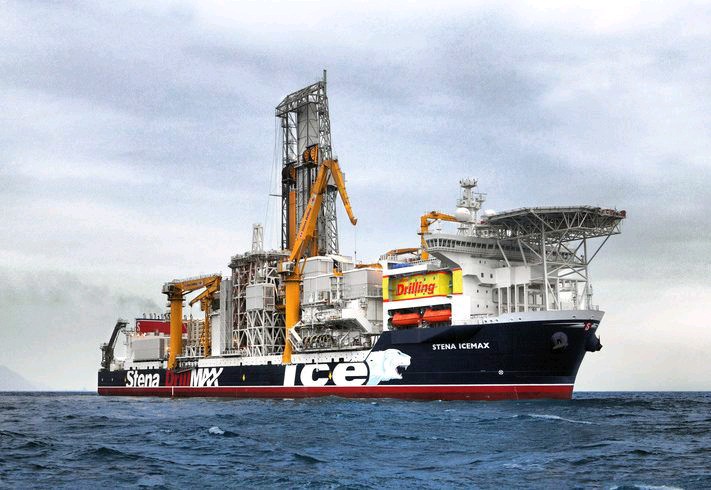
The Gambia: “no moveable oil” at Bambo-1 despite oil shows
Australian independent FAR has announced that its Bambo-1X exploratory well offshore The Gambia did not interpret any moveable oil despite encountering good oil shows. The well was drilled to a total depth of 3317 metres MDBRT within Block A2 just south of Senegal’s Sangomar oil field. FAR is operator of the A2 license with a 50% interest. Drilling consisted in the Bambo-1 well, which was plugged and followed by the Bambo-1ST1 well. The well targeted three key prospects: Soloo, Bambo and Soloo Deep with resources estimated at a maximum of 1.118 billion barrels and chances of success ranging between 7% to 37%. “The drilling and logging data obtained on the main well and the side-track well indicates that several target intervals in the well had oil shows, confirming a prolific oil source is present in the area,” FAR said. While results are encouraging for future exploration campaigns, they remain a disappointment for FAR’s short-term prospects. The company went into default in early 2021, forcing it to sell its entire 15% interest in the Sangomar offshore oil project (RSSD joint-venture) in Senegal to Woodside Energy. A successful discovery at Bambo would have allowed FAR to enter development stage and continue to be part of the MSGBC Basin’s ongoing success story. Details on the exploration of the A2 and A5 Blocks offshore The Gambia are available in the “Projects” section within your Hawilti+ research terminal.
Read more »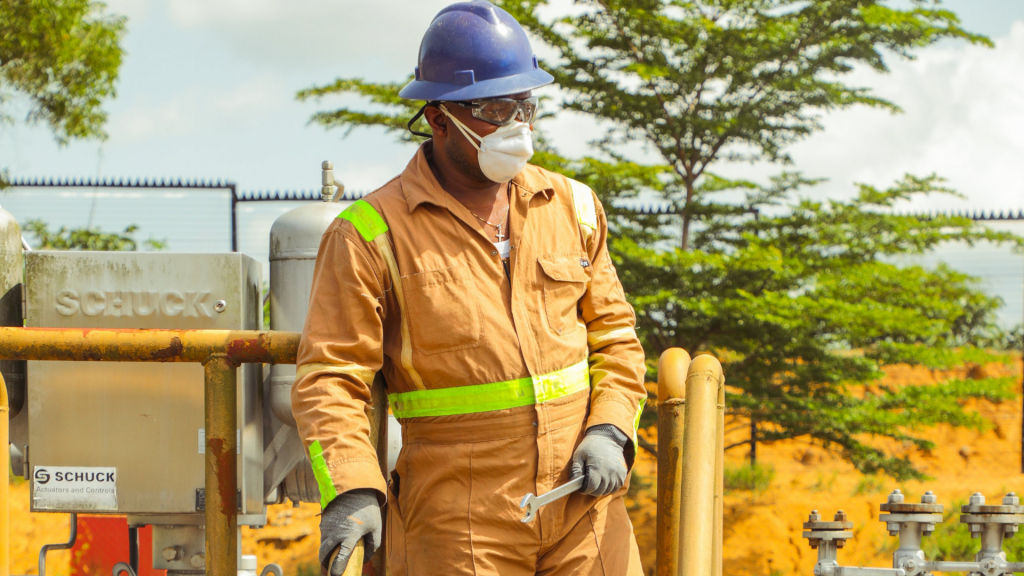
Savannah Energy signs agreements to acquire ExxonMobil and PETRONAS’ assets in Chad and Cameroon
After months of negotiations and site visits, Savannah Energy has announced the execution of share purchase agreements (SPAs) worth $626m with ExxonMobil and PETRONAS to acquire their oil & gas assets in Cameroon and Chad. The deals will see the British independent gaining a combined 75% controlling interest in the Doba Oil Project and 70% indirect controlling interest in the Chad-Cameroon oil export transportation system. Chevron had previously sold its 25% interest in the Doba Oil Project and 21% interest in the pipeline system in 2014 to the Government of Chad for $1.3bn. While negotiations with ExxonMobil had been announced earlier this year, the acquisition of PETRONAS’ interests in both countries was not expected. The transaction will see Savannah Energy expand its African portfolio, which already comprises upstream oil operations in Niger and upstream and midstream gas operations in Nigeria. The ExxonMobil Acquisition – $360m Savannah Energy is acquiring ExxonMobil’s entire upstream and midstream asset portfolio in Chad and Cameroon for $360m. The acquisition will be funded through a mixture of debt and equity/equity-linked financing and the SPA has an economic effective date of January 1st, 2021. Concretely, Savannah Energy is acquiring a 40% interest and operatorship of the Doba Oil Project, an onshore oil business with a production of 33,700 barrels of oil per day (bopd) in 2020. It is also acquiring a 40% indirect interest in the Chad-Cameroon oil export transportation system, that comprises the 1,081km Chad-Cameroon oil pipeline and the Kome Kribi 1 floating, storage and offloading (FSO) vessel offshore Cameroon. Last year, the pipeline transportated an average of 129,200 bopd. The facilities have been operating since 2003 and the pipeline remains the only evacuation route for Chad’s oil and is used by several operators. According to Hawilti’s research, the current list of pipeline beneficiaries include China National Petroleum Corporation International Chad, Cliveden, Royalty In Kind, Société des Hydrocarbures du Tchad (SHT), ExxonMobil, Petronas, Petro Chad Mangara, Glencore and Petroleum Chad Company Limited. The PETRONAS Acquisition – $266m Secondly, Savannah Energy is further consolidating its interest in the same assets by also acquiring PETRONAS’ entire upstream and midstream asset portfolio in Chad and Cameroon. The transaction is valued at $266m and the SPA also has an economic effective date of January 1st, 2021. Under this second transaction, Savannah Energy is acquiring an additional 35% interest in the Doba Oil Project and an additional 30% indirect interest in the Chad-Cameroon oil export transportation system. As a result of both acquisitions, Savannah Energy is acquiring a combined 75% controlling interest in the Doba Oil Project and 70% indirect controlling interest in the Chad-Cameroon oil export transportation system. The remaining interests are owned by the national oil companies of Chad and Cameroon. Details on the Chad-Cameroon Petroleum Development and Pipeline Project are available in the “Projects” section within your Hawilti+ research terminal.
Read more »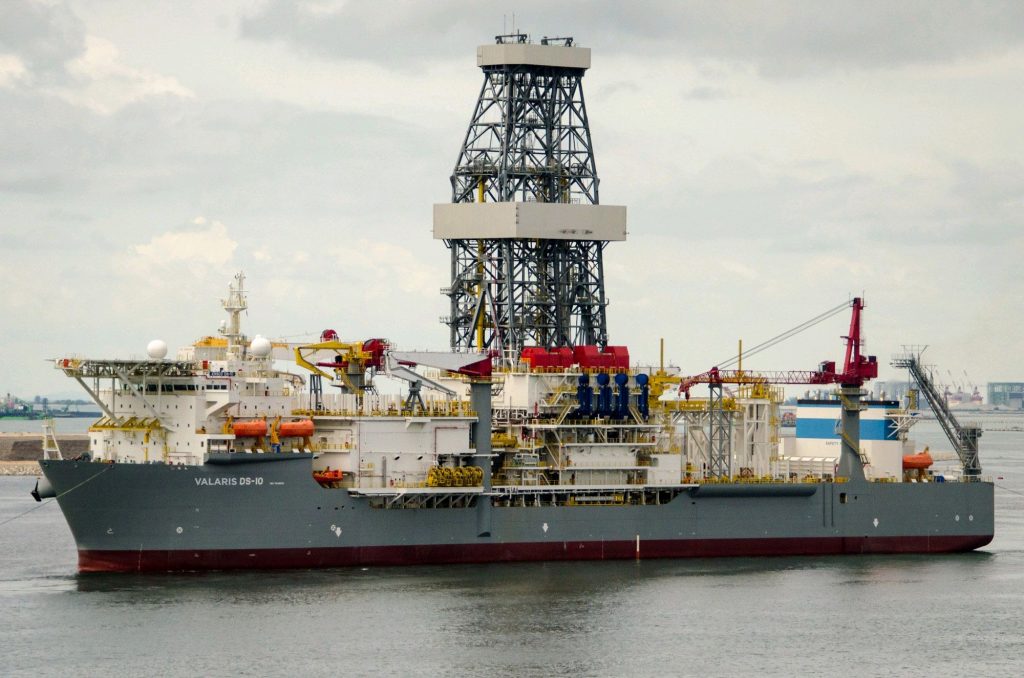
After TotalEnergies, Shell spuds its own high impact deep-water well in Namibia’s Orange Basin
The Valaris DS-10 drillship has spudded the Graff-1 well within Block 2013A (Petroleum Exploration License 39) offshore Namibia. Shell Namibia Upstream BV is operator with a 45% along with partners Qatar Petroleum (40%) and national oil company NAMCOR (10%). Namibia’s PEL 39 has been owned by Shell since 2014 when it acquired Signet Petroleum’s interests in both blocks 2913A and 2914B. It covers about 12,000 km2 on the Namibian/South African maritime border, within the Orange Basin, and remains one of the most prospective acreage in Southwestern Africa. Just two weeks ago, TotalEnergies spudded the Venus-1 well in its block 2913b, also located in the deep-waters of the Orange Basin. Both wells, if successful, could open up a brand-new hydrocarbons province offshore Namibia. Once the Valaris DS-10 completes Graff-1, it is expected to be deployed in the Gulf of Guinea to drill the Jaca-1 exploratory well. The well is located in the Galp-operated Block 6 offshore São Tomé-e-Principe, where Shell is a technical partner. It will be first well to be drilled in the deep-water Rio Muni Basin.
Read more »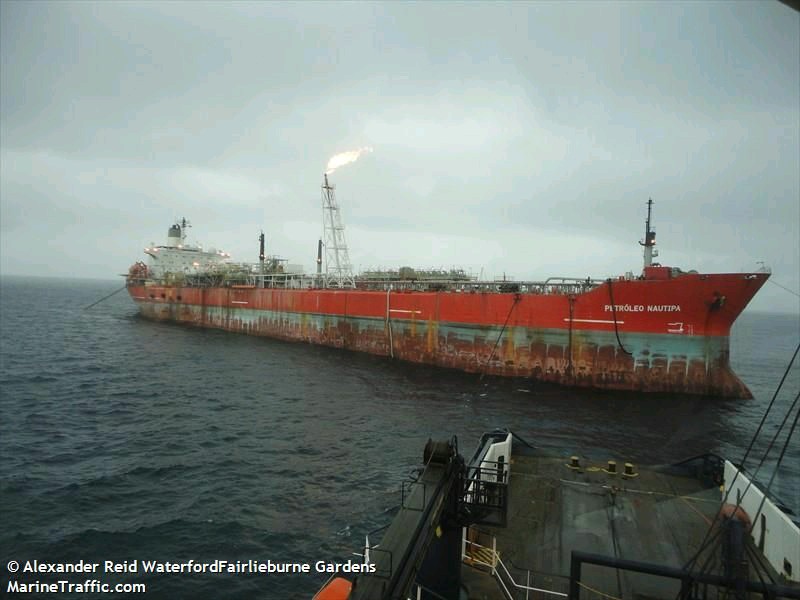
VAALCO Energy starts 4-well drilling campaign offshore Gabon
VAALCO Energy has spudded the Etame 8H-ST well offshore Gabon, the first of four wells that will be completed in 2022 at the company’s flagship project in Central Africa. Etame 8H-ST is a sidetrack of an existing well and is targeting existing Gamba hydrocarbons in the Etame field. This marks the beginning of a new drilling campaign in Gabon, executed by an affiliate of Borr Drilling. Upon completion in 2022, VAALCO Energy expects a production uplift of 7,000 to 8,000 barrels of oil per day (bopd). Etame produced an average of 15,650 bopd last year. Source: VAALCO Energy, Inc. The Etame Marin permit has been continuously producing for almost two decades in Gabon via the floating, production, storage and offloading (FPSO) vessel Petróleo Nautipa. It represents on average 10% of the country’s daily production of hydrocarbons. Earlier this year, VAALCO Energy consolidated its operated interest in the field following the closing of the acquisition of Sasol Gabon S.A.’s 27.8% working interest. Despite two decades of production that have seen over 121m barrels produced, the field is still estimated to have reserves and resources of about 113 million barrels. A recent extension until 2028 has notably paved the way for additional investment and drilling to maintain output. The contract for FPSO Petróleo Nautipa will expire in September 2022, after which the vessel will be replaced by a floating, storage and offloading (FSO) unit provided by World Carrier Offshore Services Corp. VAALCO Energy is also betting on additional exploration potential around Etame and provisionally secured a 37.5% non-operated interest in blocks G12-13 and H12-13 during Gabon’s 12th Licensing Bid Round that concluded in 2021. Both blocks’ areas surround the Etame complex and are now operated by BW Energy. Details on the development of the Etame Marin Permit are available in the “Projects” section within your Hawilti+ research terminal.
Read more »
FAR Ltd “encouraged” by preliminary findings at Bambo-1 offshore The Gambia
Australian independent FAR has advised that the Bambo-1 well offshore The Gambia has drilled 3,216m measured depth below the rotary table (MDBRT) out of 3,450m. The well has detected oil indications in rock cuttings and logging whilst drilling (LWD) data has interpreted hydrocarbons across several intervals. “Further wireline logging needs to be completed to confirm the finding,” Far said this morning. The company has also announced an increase in the drilling campaign’s cost after significant fluid losses were experienced, forcing the temporary halt of drilling operations. FAR is now planning to plug and side-track the well to continue drilling to the planned total depth. As a result, completing the Bambo-1 well is now expected to cost a total of $61.27m, up from $51.4m. According to FAR, the addition of the side-track programme has also extended the period of operation. Completion is now expected at the very end of 2021. Bambo-1 was spudded in mid-November and is drilling into a series of vertically staked targets with a combined estimated recoverable prospective resource of over 1 billion barrels. Chances of geological success range from 7% to 36%. It is FAR’s second exploratory well on the A2 Block after it drilled the Samo-1 well in 2018. Its main targeted horizons had then proved water bearing. FAR’s success case planning at Bambo-1 relies on a development of 150m barrels of oil via a 48,000 barrels of oil per day (bopd) floating, production, storage and offloading (FPSO) vessel. Three wells would then support production, gas and water injection operations.
Read more »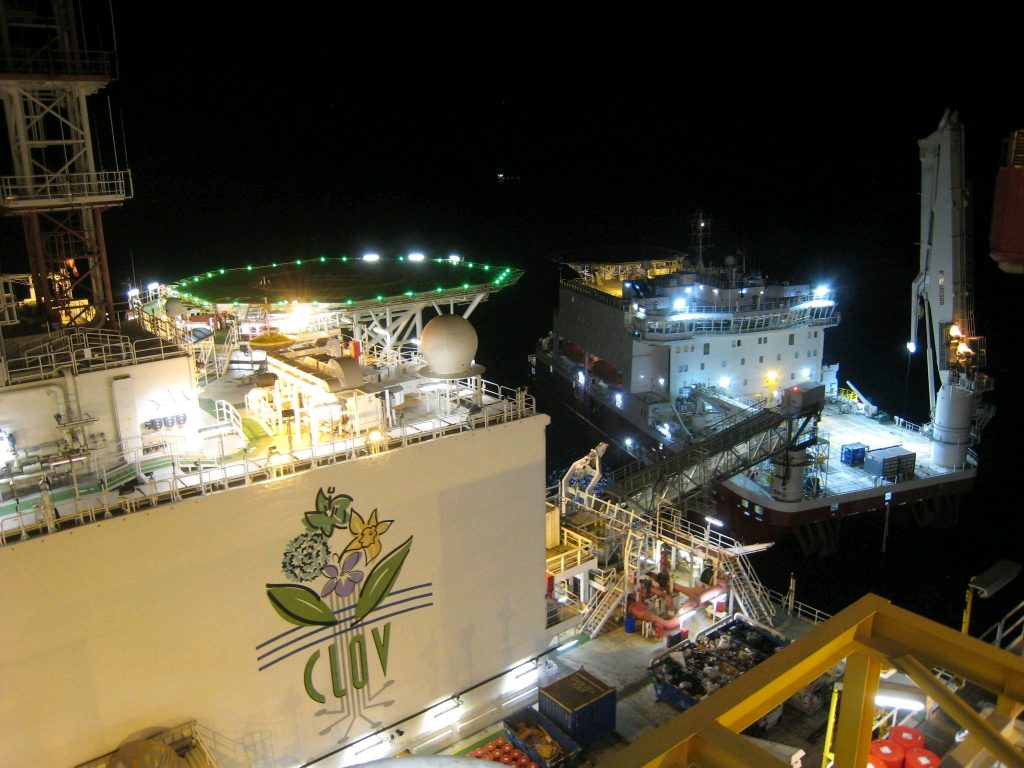
TotalEnergies start production at CLOV 2 tie-back offshore Angola
TotalEnergies has achieved first oil from a second subsea tieback project in Block 17 offshore Angola. The French major has announced start of production at CLOV 2 today, a new tie-back expected to reach a peak of 40,000 barrels of oil equivalent per day (boepd) in mid-2022. The entry into production of CLOV 2 via a tie-back to the CLOV FPSO follows that of Zinia 2 last May, via a tie-back to the Pazflor FPSO. Both projects have a production peak capacity of 40,000 boepd each. Block 17 includes a total of four floating, production, storage and offloading (FPSO) vessels: Girassol (2001), Dalia (2006), Pazflor (2011) and CLOV (2014). It remains by far Angola’s biggest producing asset. Source: MinFin Since 2018, TotalEnergies has been engaged in a significant redevelopment of the block. The move was supported by an exrension of standardization of the dates for the production periods of most areas on the license in 2020. All are now valid until December 31, 2045. After Zinia 2 and CLOV 2, TotalEnergies is expected to achieve first oil from Dalia 3 in 2022, and from CLOV 3 in 2023. Details on the development of Block 17 offshore Angola are available in the “Projects” section within your Hawilti+ research terminal. Hawilti also publishes, twice a year, a detailed market report on Angola’s oil & gas sector available within its terminal.
Read more »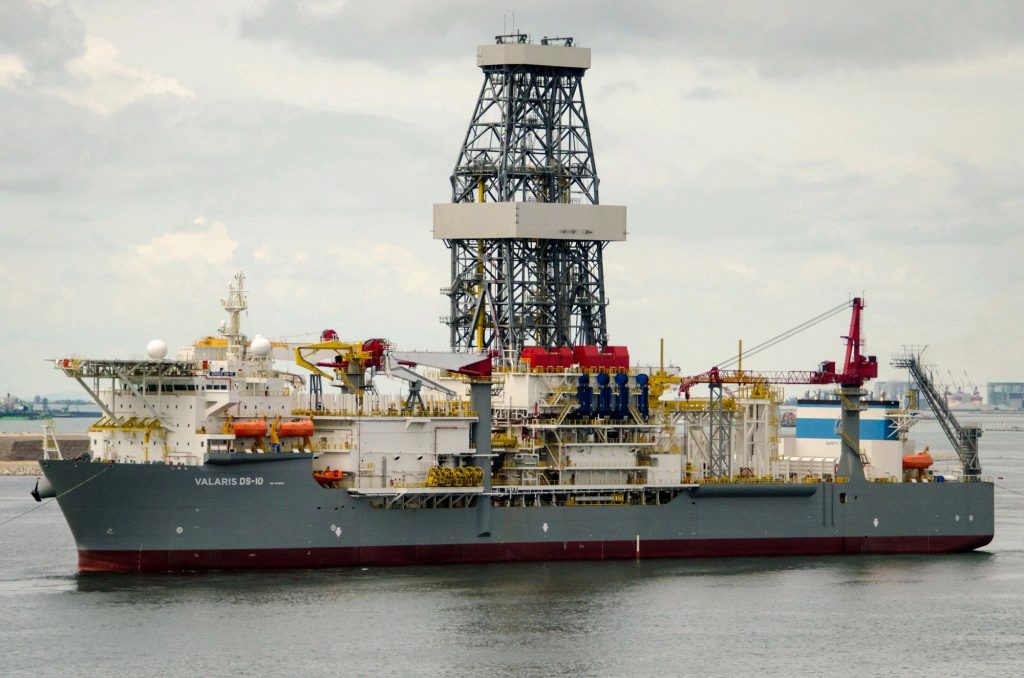
Eyes on the Prize: African exploration is back!
Independents and international oil companies (IOCS) have finally spudded several much-awaited exploratory wells in Africa this quarter. They signal the resumption of exploratory drilling activity, in a continent that remains heavily under-explored. While Eni has led exploratory efforts this year so far with three discoveries in Angola (Cuica), Ghana (Eban) and Côte d’Ivoire (Baleine), additional operators have now taken the lead in hopes of closing 2021 with even more success. Bamboo-1X, FAR, The Gambia Drilling commenced in mid-November at Bambo-1 offshore The Gambia. Operator FAR Ltd is targeting three key prospects there: Soloo, Bambo and Soloo Deep. Resources are estimated at a maximum of 1.118 billion barrels and chances of success range between 7% to 37%. Drilling is executed by Stena Drillmax Ice. In case of a discovery, FAR has indicated that 90m barrels would be the set minimum economic field size. Its success case planning relies on a development of 150m barrels of oil via a 48,000 barrels of oil per day (bopd) floating, production, storage and offloading (FPSO) vessel. Three wells would then support production, gas and water injection operations. FAR is operator with a 50% working interest in the A2 and A5 permits with its joint venture partner, PC Gambia Ltd (50%), a subsidiary of Petroliam Nasional Berhad (PETRONAS). Jove Marine-1X, Petronas, Gabon Petronas spudded the Jove Marine-1X well in block F13 offshore Gabon in early November 2021. The Malaysian national oil company hopes to replicate its 2018 success with its nearby Boudji discovery. Drilling is executed by the Maersk Viking. Jove-1X is testing a four-way dip closure in the pre-salt Gamba and Dentale formations in the distal portion of the Lower Congo Basin. A discovery there would be welcomed news for Gabon after disappointing results from BW Energy’s exploration campaign earlier this year in the same area. Ondjaba-1X, TotalEnergies, Angola Activities at TotalEnergies’ Ondjaba prospect in Block 48 offshore Angola started back in October 2021. The well was drilled by the Maersk Voyager, which has since then moved to Namibia where it is currently drilling the Venus prospect. The Ondjaba-1 exploratory well was expected to reach 3,628m, setting a new world record. Block 48 is operated by TotalEnergies (40%) along with Angola’s national oil company SONANGOL (30%) and Qatar’s national oil company Qatar Petroleum (30%). Venus-1X, TotalEnergies, Namibia Venus-1X was spudded earlier this week offshore Namibia within Block 2913b, by the Maersk Voyager. The well will target an enormous middle Cretaceous basin floor fan at the toe of the Orange river delta, targeting a potential of 1 billion barrels of oil. Venus is one of two wells that, if proved successful, would significantly transform Namibia’s energy landscape and economy. Block 2913b is operated by Total E&P Namibia B.V. along with Qatar Petroleum (30%), Impact Oil and Gas (20%), and NAMCOR (10%). Graff-1X, Shell, Namibia November also marked commencement of exploratory drilling on PEL 39 offshore Namibia. The license is held by Shell and contains the Graff prospect. Like Venus, Graff is located within the Orange Basin and close to the South African maritime border. The Valaris DS-10 is mobilized for the campaign and is expected to then move to São Tomé-e-Principe to drill Jaca-1X on Block 6. PEL 39 is operated by Shell Namibia Upstream BV (45%) along with partners Qatar Petroleum (40%), and NAMCOR (10%). Sibiri-1X, Seplat Energy, Nigeria Last but not least, Seplat Energy is targeting the 78m barrels Sibiri prospect on OML 40 in Nigeria. The Sibiri exploratory well (previously known as Amobe) is one of the few exploration prospects being drilled in the country this year and is expected to help further increase the resource base on OML 40 where the wells on the Gbetiokun field are currently producing a peak of 12,000 barrels of oil per day (bopd). Preparatory activities for drilling of the high-impact prospect have been ongoing for a while. According to Seplat Energy, Sibiri carries a risked best estimate gross prospective oil resource of 78m barrels. The operator has already evaluated several options to accelerate the development of the discovery and achieve first oil in the event of exploration success. OML 40 is operated by the Nigerian Petroleum Development Company (NPDC, 55%) along with its partner Elcrest Exploration and Production Company Limited (Elcrest, 45%). Elcrest is itself a Joint Venture between Eland Oil and Gas (Nigeria) Limited (45%) and Starcrest Nigeria Energy Limited (55%). Seplat Energy acquired Eland Oil and Gas in 2019.
Read more »
TotalEnergies spuds most anticipated well of the year offshore Namibia
The 7th generation drillship Maersk Voyager has spudded the Venus-1 well within Block 2913b offshore Namibia. The block is operated by Total E&P Namibia B.V. (40%) along with its partners Qatar Petroleum (30%), Impact Oil and Gas (20%), and national oil company NAMCOR (10%). Namibia’s Block 2913b is located in the ultra-deep waters of the Orange Basin and at the maritime boundary with South Africa. Its Venus prospect is believed to be one of Africa’s most promising offshore prospects and could result in a multi-billion barrels discovery. The well will target an enormous middle Cretaceous basin floor fan at the toe of the Orange river delta, targeting a potential of 1 billion barrels of oil. Venus-1 is one of two very important exploratory wells being drilled offshore Namibia in Q4 2021. The second one is Graff-1 on PEL 39, operated by Shell Namibia Upstream (45%) along with its partners Qatar Petroleum (40%) and Namcor (10%). Valaris was selected to execute the drilling campaign at Graff. Details on Block 2913b and PEL 39 exploration are available in the “Projects” section within your Hawilti+ research terminal.
Read more »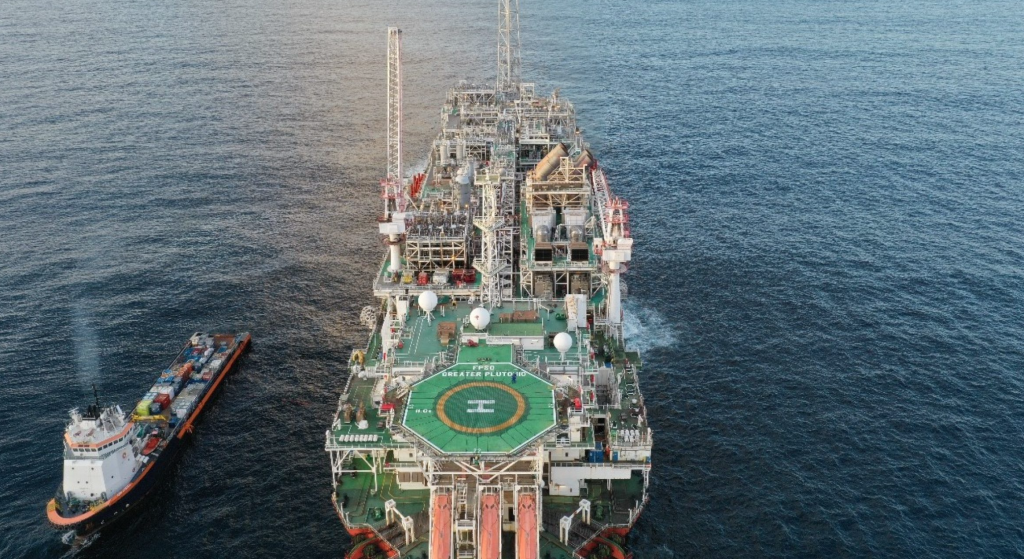
bp achieves first oil from subsea tieback project on Block 18 in Angola
bp has announced start of production from its Platina project on Block 18 offshore Angola. The field was brought online ahead of schedule and under the contractor’s group initial budget. The block is operated by bp Angola (Block 18) B.V. (36.34%) along with BP Exploration Beta (9.66%), Sonangol SSI (7.72%), and Sonangol E&P (16.28%). The project will develop an estimated 44m barrels of oil reserves and add 30,000 barrels of oil per day (bopd) to Block 18 production once it reaches its peak in 2022. In its 2022 budget, Angola expects Block 18’s output to grow by over 45% next year thanks to Platina. The field will contribute to reversing Angola’s production decline next year and bring back oil GDP to positive after six consecutive years in the red. The development by bp of the offshore Greater Plutonio area within Block 18 in Angola was the British major’s first operated asset in the country. Commissioned in 2007, the project initially developed five fields (Galio, Cromio, Paladio, Plutonio, and Cobalto) in water depths ranging from 1,200 to 1,450 m. The Greater Plutonio floating, production, storage and offloading (FPSO) vessel has a maximum throughput capacity of 240,000 barrels of oil per day (bopd), with a storage capacity of 1.77m barrels. Source: Ministry of Finance, Angola Block 18 forms part of Sonangol’s ongoing partial divestment process. The national oil company is currently divesting up to 8.28% in the license, which received one of the highest number of bids. Interested parties notably include Namcor, Falcon Oil, Somoil and MTI Energy. Details on the development of Block 18 offshore Angola are available in the “Projects” section within your Hawilti+ research terminal.
Read more »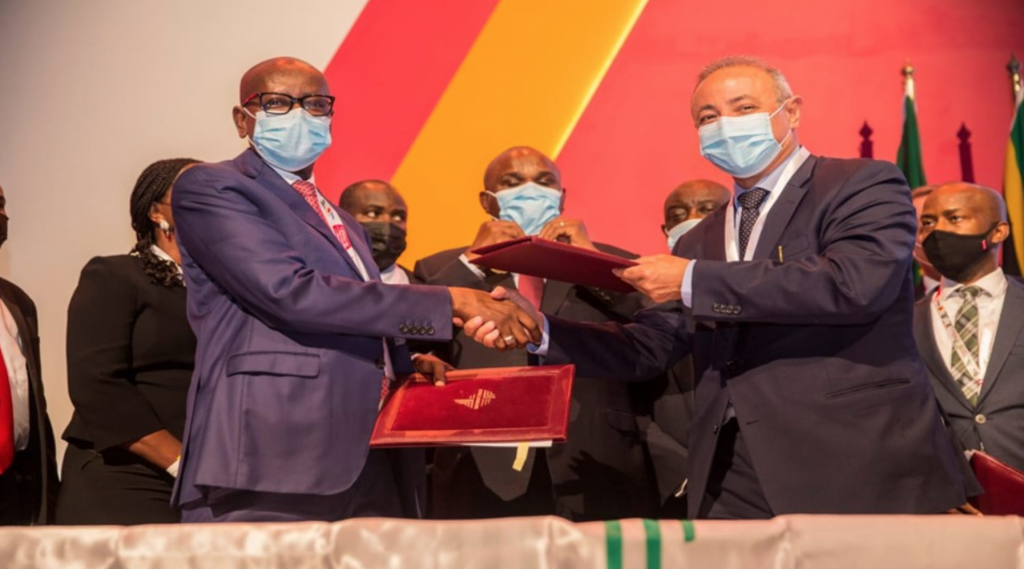
Afreximbank signs $2 billion in deals with Nigerian oil & gas companies
The African Export-Import Bank (Afreximbank) showed up for Nigeria’s oil sector this week in Durban, during the Intra-African Trade Fair 2021. The bank has signed three separate deals totaling almost $2bn with the state-owned Nigerian National Petroleum Corporation (NNPC), indigenous operator Eroton Exploration & Production and new Nigerian independent Mars Exploration & Production. A $1.04 bn exploration deal with NNPC The first agreement is a $1.04 billion facility with the NNPC to finance oil exploration in Nigeria. It notably notably comprises a pre-export/shipment finance facility underpinned by a forward sale agreement (FSA) and offtake contracts from the NNPC acting as the borrower and seller. Under the terms of the contract, NNPC will enter into an FSA within which it shall deliver 35,000 barrels of crude oil per day (bopd). The NNPC was represented by Umar I. Ajiya, Group Executive Director, Finance & Accounts while the Afreximbank was represented by Amr Kamel, Executive Vice President, Business Development & Corporate Banking. A Second Lending Facility to Eroton E&P The second agreement is a term-sheet that lays the basis for the approval of a $750m senior secured reserve-based lending facility with Eroton Exploration & Production, the Nigerian company that operates OML 18 with a 27% interest in the Niger Delta. IIt was signed by Chairman Onajite Okoloko. Other parties in the deal are Shell Western Supply & Trading and Midwestern Oil & Gas Company Limited. Midwestern is an indirect owner of Eroton E&P through its 60% ownership of Midwestern Leon Petroleum, which in turns owns Eroton E&P’s mother company Martwestern. Out of the full facility, $196m is expected to refinance Eroton’s current senior bank debt. The remaining is expected to help Eroton finance the acquisition of an additional 18% economic interest in OML 18 from Sahara Field Production Ltd (SFPL, 16.2%) and Bilton (1.85%). Afreximbank and Eroton have been working together since the Nigerian company acquired Shell’s interest in OML 18 back in 2015. The bank had then provided a $663m syndicated reserve base lending facility to Eroton. Financing AA&R’s Acquisition Spree The third and last deal is a $274m senior secured reserve-based lending facility to Mars Exploration & Production, a subsidiary of Nigeria’s AA&R Group. AA&R is in the process of acquiring several offshore licenses in Nigeria and details on the transaction are available within the Hawilti+ research terminal.
Read more »
FAR has spudded the Bambo-1 exploratory well offshore The Gambia – What’s next?
FAR has successfully spudded the Bambo-1 exploratory well on Block A2 offshore The Gambia. The drilling campaign will take about one month and drill the well to a depth of about 3,400 metres. Bambo-1 will drill into a series of vertically staked targets with a combined estimated recoverable prospective resource of over 1 billion barrels with chance of geological success ranging from 7% to 36%. This will be FAR’s second exploratory well on the block after it drilled the Samo-1 well in 2018. Its main targeted horizons had then proved water bearing. While FAR now targets the Bambo, Soloo and Soloo Deep prospects, the Bambo one is believed to be the most prospective of the three of over 500m barrels of estimated recoverable prospective resource. Equally important, the well located is just south of Senegal’s Sangomar oil field where Woodside Energy expects to achieve first oil in 2023. FAR was previously part of the Sangomar joint-venture before it had to exit the license last year. The operator is very familiar with the environment offshore Senegal and The Gambia and expects to prove the southern extension of the Sangomar oilfield. FAR already drilled the Samo-1 well on Block A2 back in 2018 but its main targeted horizons proved water bearing. A new exploration plan was put on the table in 2019 when both blocks benefited from new licenses, still operated by FAR (50%) along with PETRONAS’ subsidiary PC Gambia (50%). Likely Development Scenario In case of a discovery, FAR has indicated that 90m barrels would be the set minimum economic field size. Its success case planning actually relies on a development of 150m barrels of oil via a 48,000 barrels of oil per day (bopd) floating, production, storage and offloading (FPSO) vessel. Three wells would then support production, gas and water injection operations. Map: FAR Ltd Details on the A2 & A5 Blocks Exploration offshore The Gambia are available in the “Projects” section within your Hawilti+ research terminal.
Read more »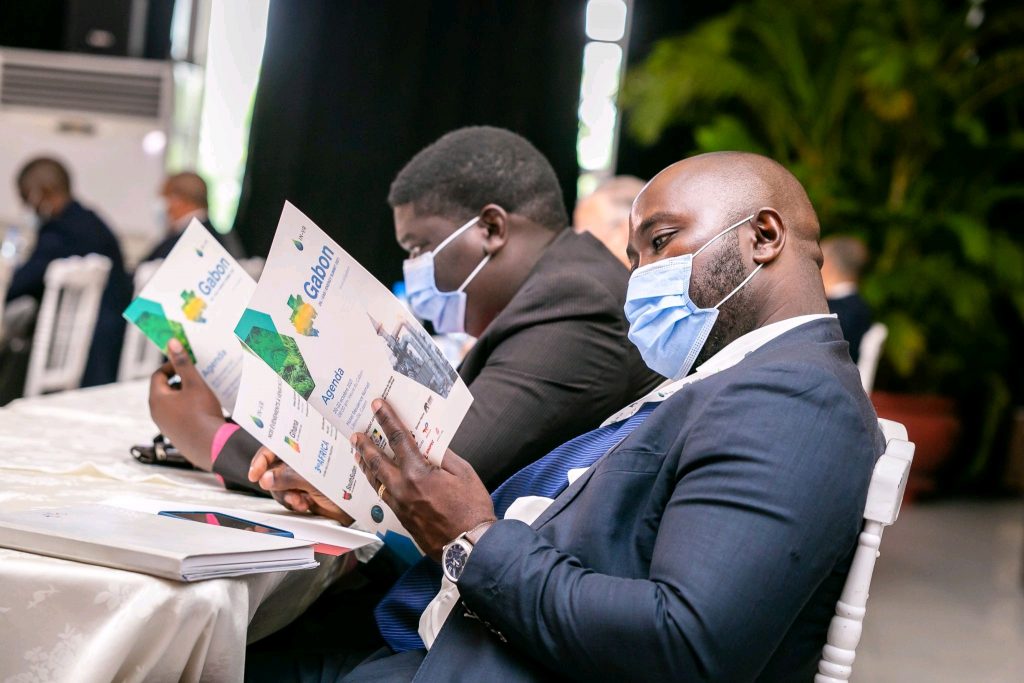
Gabon exposes clear vision on what to do with its natural gas
Gabon is thought to hold anywhere between 3 to 5 trillion cubic feet (Tcf) of gas, although the country remains a small gas producer. To date, most of its gas has remained on the ground or flared – with only small quantities monetised domestically for power generation in Libreville and Port Gentil. But as Gabon implements an ambitious “Green Gabon” environmental policy and seeks to diversify its economy, the country wants to cut routine flaring altogether and monetise it for the benefits of its industries, households, and economy. The recent Gabon Oil, Gas & Energy Summit organized by IN-VR in Libreville last October notably exposed the alignment of most parties on the need to monetise gas instead of flaring it. A New Gas Strategy in the Making To achieve its gas ambitions, Gabon is currently working on a new Gas Master Plan with Wood Mackenzie and the World Bank’s Global Gas Flaring Reduction Partnership (GGFR). The plan will have four major ambitions: reduce gas flaring, increase energy security, expand access to affordable energy and attract investments into gas projects. Gabon’s flared gas currently emits about 2,244,500 tonnes of CO2 per year, enough to generate 500 MW of power. Natural gas also features prominently within the country’s 2021-2023 Plan to Accelerate Transformation (PAT), which includes a dedicated Gas Task Force headed by former Gabon Oil executive Yann Pierre A. Livulibutt Yangari. “Our gas strategy is targeting actions across the whole value-chain. In upstream, we want to get operators to explore for gas and stop considering it as a risk. In midstream, we want to see flared gas being monetised for the benefits of the Gabonese economy. Finally in downstream, we want to improve gas supplies especially of liquefied petroleum gas (LPG), compressed natural gas (CNG) and liquefied natural gas (LNG),” Yangari said during IN-VR’s summit. As it stands, Gabon intends to primarily monetise flared gas to generate power, manufacture urea and produce methanol. These are the major industries identified based on existing gas reserves and technology available from existing investors and operators in the country. Once these are developed, hopes are that by-products would follow, especially when it comes to LPG, CNG (Autogas) and micro-LNG. Source: DGEPF “We are working on supporting the development of a gas-based economic network to support local content development, promote technology adoption and support industrialisation,” Yangari added. While Gabon has not discovered enough gas reserves to justify the development of more significant industries like LNG for export or gas-to-liquids, the country remains hopeful. Its 12th Licensing Bid Round has resulted in the award of new exploration blocks, and upcoming drilling campaigns could result in new gas discoveries supporting further gas developments in the medium-term. To justify the investment, Gabon is putting forward its growing industrial base driving demand for both power and gas. Last September, the Gabon Power Company (GPC) notably signed a landmark Concession Agreement with Wärtsilä for the development, supply, construction, operation, and maintenance of a new 120 MW gas-to-power project in Owendo, next to the capital city of Libreville. But beyond just the power sector, Gabon wants to provide gas to its mining, forestry, agro-industry, and steel industries. In parallel, its logistics network is expanding with railways and maritime industries both positioned to be potential off-takers sooner than later. An Opportunity for Small-Scale Gas Projects Gabon’s vision relies on the monetization of gas into CNG for transport and micro-LNG for industries. A key strategy is to expand the country’s CNG network but use micro-LNG for any remote industries located over 400km from producing fields, especially mining industries. To support such expansion, the country is seeking investors across several projects such as LPG plants, LNG and CNG plants, LNG and CNG storage, onsite regasification and bi-fuel conversion. Chief amongst them is the need to secure 30,000 cubic metres of additional butane storage capacity, up from only 4 to 5,000 cubic metres now. Source: DGEPF Port Gentil features prominently within that vision as a pilot city to grow the CNG industry. It is there that Perenco already runs a private gas retail station for 40 of its own vehicles. Now, Gabon wants to grow the market by constructing public CNG stations in partnership with oil marketers and develop a new pricing structure for CNG. The aim is clear: reduce petroleum products imports while generating additional revenues from domestic gas. Perenco Takes the Lead Perenco will be a key actor of that transition to gas. The operator is the country’s sole commercial gas producer and currently supplies gas feedstock to the power stations of Port Gentil and Libreville. In fact, 100% of Port Gentil’s power relies on Perenco’s gas while 70% of Libreville’s power is generated from the operator’s gas supply. “We have invested $500m into the development of a 400km onshore and offshore gas gathering system in Gabon that supplies gas to power plants but also key industries such as Sobraga. In the process, we created 150 jobs,” Director General Adrien Broche said during the IN-VR Summit. Perenco is now increasing its investments and leveraging on its existing infrastructure to commission a 10 to 15,000 tonnes per annum (tpa) LPG plant in Batanga by 2023. Batanga is currently the cornerstone of its gas business and is equipped with enough compressors to compress gas to over 100 bars so it can be transported across the country. “The Libreville and Port Gentil power stations currently represent an off-take of about 40 MMscfd,” Broche explained. “While only half of that capacity was coming from flared gas, we are installing additional compression capacity so all feedstock supplied to power plants comes from previously flared gas. We have installed two onshore compressors this year and are now expecting additional ones for offshore operations. By mid-2022 or early 2023, all gas we send onshore for power generation will come from previously burned resources,” he added. The Need for an Industry and Policy Consensus But to furter monetise gas and create jobs, Gabon must first find a way to aggregate
Read more »
ExxonMobil to resume drilling offshore Angola in June 2022
ExxonMobil’s affiliate in Angola has just awarded Valaris a two-year contract for drillship VALARIS DS-9. The rig is to be reactivated and mobilized to Angola in June 2022. This marks the resumption of drilling activities for ExxonMobil in Angola following a June 2019 agreement with National Agency for Petroleum, Gas and Biofuels (ANPG) to further invest in the development of Block 15. While ExxonMobil has deployed four floating, production, storage and offloading (FPSO) units on Block 15 in 2004, 2005 and 2008, the license offers significant potential for redevelopment to tap into remaining reserves. In the first nine months of 2021, the block exported an average of 158,000 barrels of oil per day (bopd) according to data from Angola’s Ministry of Finance. To facilitate further development, the block’s 11 development areas were merged into only four in 2019. Additional investment is expected to unlock about 40,000 bopd of additional production and generate 1,000 local jobs as expansion projects get executed. ExxonMobil’s multi-year drilling program on the block is expected to involve 17 wells in phase one, followed by about 20 wells in phase 2.
Read more »
BW Energy moves to develop giant Namibian gas field first discovered in 1974
BW Energy has just signed an agreement with Aquadrill LLC to acquire the semisubmersible drilling rig “Leo” for a total consideration of $14m. Surprisingly, the rig is not to be used for the company’s flagship Gabonese nor Brazilian assets, but for the development of the Kudu gas field offshore Namibia. The acquisition of the “Leo” drilling rig follows indeed a new revised development plan for Kudu under which BW Energy plans to use a repurposed semisubmersible drilling rig as a Floating Production Unit (FPU). 1.3 Tcf of Gas Within Namibia’s Sole Production License Despite about 1.3 trillion cubic feet (Tcf) of gas discovered and its ability to transform Namibia’s energy sector and resolve the country’s energy crisis, the Kudu gas field has remained undeveloped since its first discovery by ChevronTexaco in 1974. Located 170 km off the coast of Namibia, Kudu has been subject to substantial drilling with seven appraisal wells drilled since its discovery: two by Swakor in 1987 and 1988, four by Shell in the 1990s, and one by Tullow Oil in 2007. The field has had several operators as well since it was discovered: ChevronTexaco was followed by Swakor in the 1980s then Shell in the 1990s, then Energy Africa in the 2000s before the company was acquired by Tullow Oil in 2004 which led to the issuance of Production License 001 in 2005. In the more recent past, Gazprom and national oil company NAMCOR took over the field for a short while in 2010 and 2011 (Production License 002) before operatorship was given back to Tullow Oil in 2011 (Production License 003). The British multinational finally withdrew with its Japanese partners in 2014, and BW Energy has been operator since 2017 with a firm intention to bring the project to final investment decision (FID). From the inability of parties to agree on a gas price to delays in obtaining governmental support packages and finalising costs, several factors have contributed over the years to constantly reschedule the project’s FID. BW Energy Take Over and Revives Namibia’s Gas Ambitions When BW Energy acquired the field in 2017, Kudu was estimated to contain 1C contingent resource of 755 billion standard cubic feet (Bscf), with 2C contingent resources estimated at 1.33 Tcf and 3C ones at 2.3 Tcf. The development of the field still calls for the establishment of an integrated upstream-midstream-downstream venture to produce gas via a floating production unit (FPU) before exporting it to shore to generate electricity. While initial plans envisioned a gas-to-power plant of up to 885 MW, the facility is expected to finally have half that capacity if commissioned. The latest Contingent Resources Report prepared by ERC Equipoise Ltd for BW Energy in January 2020 notably estimates gross contingent gas resources at 587 Bscf, enough to justify a 440 MW gas-to-power plant. Full details on the Kudu Gas Project are available in the “Projects” section within your Hawilti+ research terminal.
Read more »
TechnipFMC sees $3bn of subsea opportunities in Africa within 24 months
TechnipFMC sees subsea opportunities across Nigeria and Angola totaling between $3bn and $5bn within the next 24 months, the company said during its Q3 2021 earnings conference call. This remains in line with its previous estimate released at the end of Q2. Angola to the front The subsea market in the region will be heavily driven by TotalEnergies’ projects in Angola. These notably include the development of the Begonia (Block 17/06) and Cameia (Block 21) fields, with subsea projects values of at least $250m for both. Block 21 is notably the location of one of TotalEnergies’ future production hubs with the pre-FEED for a new floating, production, storage and offloading (FPSO) unit awarded to Yinson earlier this year. Future subsea projects by TotalEnergies in Angola also include the execution of two subsea tieback projects on producing blocks: Cravo, Lirio, Orquidea and Violeta (CLOV) Phase 3 on Block 17 and the ACCE project on Block 31 (an acronym for the Alho, Cominhos and Cominhos East fields). The latter is expected to be the biggest of the pack, with a value of $500m to $1bn. Block 17 has been subject to significant subsea activity recently, with the commissioning of Zinia 2 earlier this year and the ongoing execution of Dalia 3 and CLOV 2. Hawilti’s own research sourced from the Hawilti+ research terminal further shows that Angola will be remaining sub-Saharan Africa’s biggest subsea market in the medium-term. In July 2021, Italian major Eni notably requested expressions of interest for the Agogo full field development on Block 15/06, including the provision of an FPSO system. “Several new production hubs are in the making offshore Angola while producing blocks have received a series of incentives to develop marginal and satellite fields,” said Mickael Vogel, Head of Research at Hawilti. “Infrastructure-led exploration has also proven a very successful strategy in the country and is expected to continue, especially in Block 15/06 and Block 17.” A possible recovery in Nigeria Meanwhile, TechnipFMC sees two projects moving forward in Nigeria that could support the subsea market in the country. One is the development of the Preowei field on OML 130, operated by TotalEnergies and whose field development plan has been approved since 2019. The other one is further development of the Shell-operated Bonga asset on OML 118. In May 2021, new agreements were executed for OML 118 between the NNPC and contractor parties SNEPCo (Shell), ExxonMobil, Total and NAOC (Eni). However, a big question at the moment remains what future Bonga development project will be approved first: Bonga North or Bonga South-West/Aparo. Full details on ongoing and future projects offshore Angola and Nigeria are available in the “Projects” section within your Hawilti+ research terminal.
Read more »
BW Energy starts production from Tortue Phase 2 offshore Gabon
BW Energy has announced that the hook-up of the DTM-6H and DTM-7H production wells at its Dussafu Marin Permit offshore Gabon has been completed and handover to production operations made. DTM-7H (Gamba formation) was brought online yesterday, while DTM-6H (Dentale formation) is expected online in the coming days. Both wells form part of the four additional production wells drilled as part of the Tortue Phase 2 project and tied-back to the FPSO BW Adolo. Out of these four wells, DTMH-4 and DTMH-5 had already been brought on stream in early 2020 and are producing. However, DTMH-6 and DTMH-7 formed part of a second cluster initially scheduled for completion in June 2020 but delayed because of the Covid19 pandemic. Drilling resumed only in April 2021 while gross projected investment forecast for Tortue Phase 2 had to be cut from $275m to $238m. “The Tortue Phase 2 development was completed below budget and within the revised timeframe. We look forward to the production growth following first oil from the two wells. Operationally we will now focus on stabilisation of the production and wrapping up the project activities.” Carl K. Arnet, the CEO of BW Energy Gross production averaged about 9,000 barrels of oil per day (bopd) in Q3 2021 and currently stands at 11,500 bopd. Source: BW Energy In parallel to the completion of Tortue Phase 2, BW Energy is preparing to execute a third development phase with the Ruche Phase 1 project. It targets the Hibiscus and Ruche Fields located 20km northwest of the Tortue Field via the drilling of up to six horizontal production wells connected to a fixed wellhead platform, itself tied back to the existing BW Adolo FPSO. The drilling is expected to be split into four wells in the Hibiscus Field and two wells in the Ruche Field, all targeting the Gamba reservoir. Full details on the development of the Dussafu Marin PSC are available in the “Projects” section within your Hawilti+ research terminal.
Read more »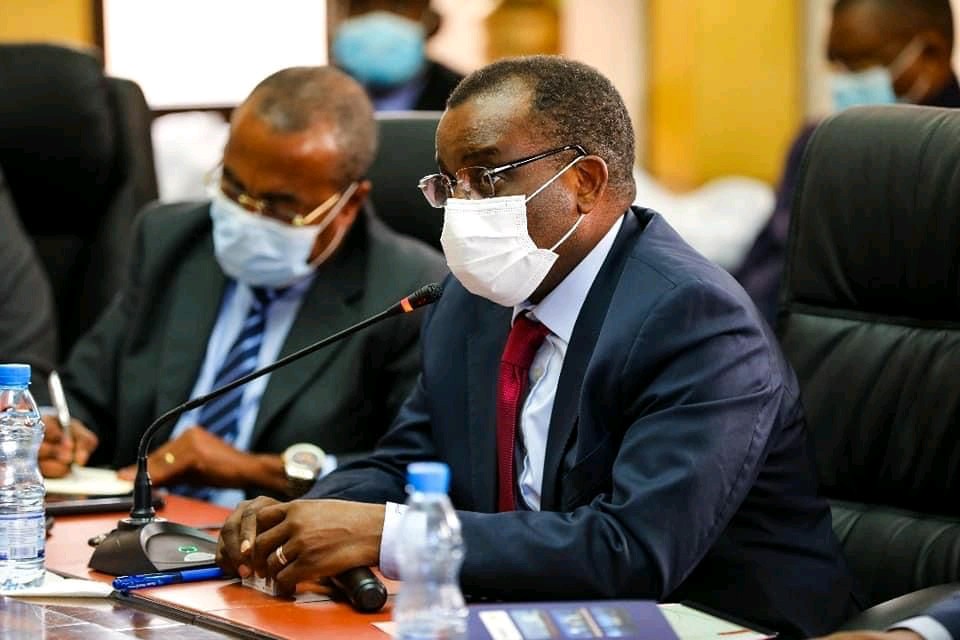
Gabon on the move: what you need to know ahead of the Gabon Oil, Gas & Energy Summit in Libreville this week
Nested in the Gulf of Guinea, Gabon has built itself a reputation of environmental stewardship and sustainable development of its natural resources. The country of less than 2.5m notably hosts Africa’s largest forest elephant population and is covered at 88% by rainforest. Despite being an established offshore hydrocarbons province, Gabon is steadily diversifying away from oil. A public-private partnership with ARISE IIP resulted in the establishment of one of Africa’s most modern and efficient free zones now serving a growing industrial and mining base. The country is in fact one of the world’s top producers of manganese, of which it exported almost 4m tonnes in the first half of the year. Gabon has also successfully industrialised its wood industry to become a recognised exporter of timber: between January and June 2021, the country produced over 1 million m3 of logs. Gabon’s economy remains fairly diversified compared to that of its African neighbours. Its oil & gas sector’s contribution to the GDP stood at 37.7% in 2020 and represented 33% of government revenues last year. Oil exports also accounted for 70% of total export revenues. Maintaining the pace of investment in the country’s hydrocarbons value-chain remains a priority for the government, especially as it seeks to develop gas-based economies and use oil revenues to invest in sustainable infrastructure and the conservation of its environment. A Focus on Reversing Production Decline Gabon is member of the Organisation of Petroleum Exporting Countries (OPEC) and produced an average of 183,000 barrels of oil per day (bopd) between January and September 2021. This makes it sub-Saharan Africa’s fourth largest producer, behind Nigeria, Angola and Congo-Brazzaville and more or less at par with Ghana. Production has been in decline for several years and has stagnated in the recent past. Gabon launched its 12th Licensing Bid Round before Covid19, which it is just concluding now. The round generated relatively strong interest given market dynamics, and award letters started being issued this month with BW Energy provisionally securing two blocks along with partners Panoro Energy and VAALCO Energy. Source: DGEPF The award of new exploration acreage is much needed in order to encourage seismic acquisition and exploratory drilling and ultimately maintain production in the medium-term. Exploration has so far been a miss this year, with BW Energy’s Hibiscus Extension appraisal well (DHIBM-2) encountering water in the first half of the year, and its Hibiscus North exploration well (DHBNM-1) failing to deliver on pre-drill resource estimate in July. An Independents’ Market Gabon is an independents and national oil companies (NOCs)’ game. Shell Gabon sold all its assets in the country to Assala Energy in November 2017, and Total Gabon sold seven of its non-operated mature fields and operatorship of the Cap Lopez Oil Terminal to Perenco in July 2020. Beyond Assala Energy and Perenco, Gabon’s upstream sector is dominated by Maurel & Prom, VAALCO Energy and BW Energy along with a few NOCs such as Petronas. TotalEnergies remains the only IOC still operating upstream assets in the country. Gabon continues to offer significant opportunities for independents, both onshore and offshore. In February 2021, Panoro Energy acquired Tullow Oil’s 10% working interest in BW Energy’s Dussafu Marin Permit. A New Strategy to Monetise Domestic Gas Gabon has been working for a few years on a new strategy to monetise gas to generate additional electricity and develop new gas-based industries. The move benefits from significant political will and support and is one of the key pillars of the country’s new three-year plan over the 2021-2023 period, dubbed Plan to Accelerate the Transformation (PAT). Because Perenco represents most of the country’s operated gas production, it will play a major role in the development of Gabon’s domestic gas market. The company completed this year studies and plans for the new 10,000 metric tonnes Batanga LPG plant, where construction is expected to start before the end of the year. In July 2019, Gabon’s Ministry of Petroleum, Gas and Mines had also signed an agreement giving the Olowi Field to Perenco as its new operator. The field was developed between 2005 and 2018 by Canadian Natural Resources and is now to be redeveloped under an integrated gas project. Source: DGEPF Finally, an expanding gas industry will benefit the power sector. Gabon already runs several gas-to-power facilities and in September 2021, the Gabon Power Company (GPC) signed a landmark Concession Agreement with Wärtsilä for the development, supply, construction, operation, and maintenance of a new 120 MW gas-to-power project in Owendo, next to the capital city of Libreville. A Diversifying Energy Basket Beyond gas, Gabon is also expanding its energy sector with the development of its solar and water resources. Several hydropower plants are currently being developed, When it comes to hydroelectricity, Meridiam and the Gabon Power Company successfully reached financial close on the 35 MW Kinguélé Aval in July this year. Additional facilities include the 15 MW Dibwangui hydropower plant and the 73 MW Ngoulmendjim hydropower plants, whose power purchase agreements (PPA) were signed with Eranove in 2018. Solar energy is also making its entry into the country’s grid with the signing last August of a contract with the Turkish group Desiba Energy for the construction of a 20 MW solar power plant in Doubou, in the province of Ngounié. To find out about investment and business opportunities in Gabon, register for IN-VR’s Gabon Oil, Gas & Energy Summit hybrid conference taking place in Libreville and online between October 20th-22nd. More information at https://www.in-vr.co/gabon. All details on ongoing and future projects across Gabon’s energy sector are available within your Hawilti+ research terminal.
Read more »
Trident Energy completes gas lift system milestone offshore Equatorial Guinea
Trident Energy’s ongoing offshore campaign in Equatorial Guinea continues to progress with the successful installation this month of a new gas lift distribution unit (GLDU) at Ceiba. This notably follows the successful completion on the field of a deep offshore hot tapping operation in April this year, and the start of a three-well drilling campaign last June. The installation of a new GLDU was necessary in order to replace the existing one where gas leaks were detected on the seabed four years ago when Trident Energy and Kosmos Energy acquired The Ceiba & Okume complex on Block G from Hess. Ceiba and Okume are two of the Gulf of Guinea’s most attractive brownfield assets. Earlier this year, Panoro Energy completed its acquisition of Tullow Oil EG, securing in the process a 14.25% non-operated working interest in Block G. Ceiba relied on 16 production wells and 10 water injectors as of 2020 and its contract expires in 2029. On the other side, Okume relies on 32 production wells and 12 water injectors and its contract expires in 2034. Source: Kosmos Energy The 2021 drilling campaign focused on three new wells: Elon-C, Elon-A and Elon-D. Moving forward, production over 2023-25 could then be further increased if driven by facility upgrades, well workovers, perforation of behind pipe zones and infill drilling. Full details on the Ceiba & Okume Fields Development (Block G) are available in the “Projects” section within your Hawilti+ research terminal.
Read more »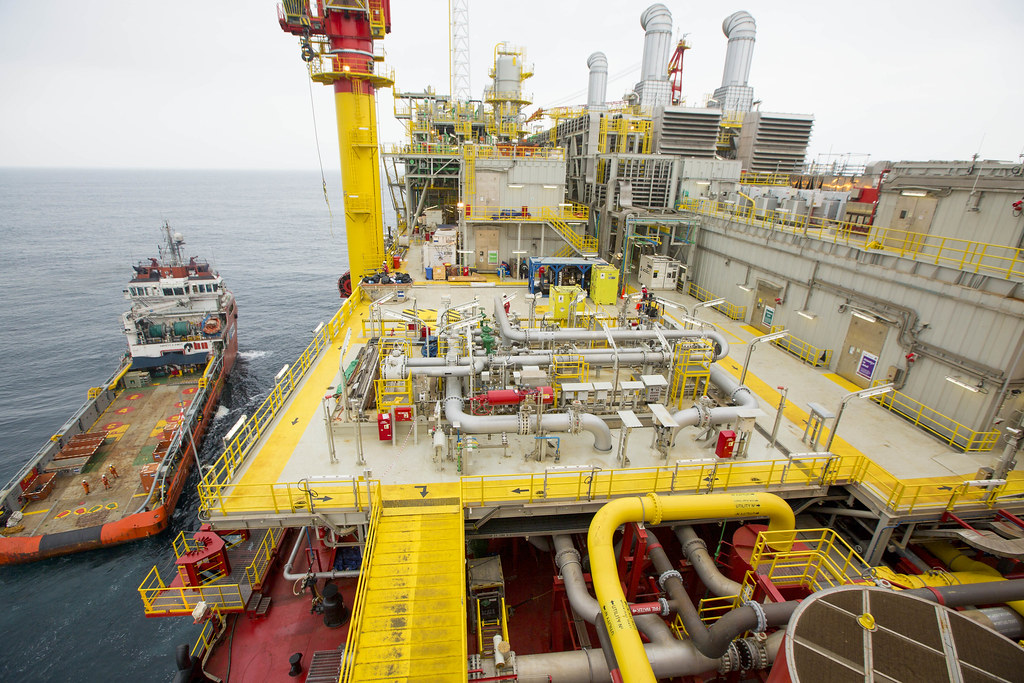
Kosmos Energy consolidates interests in Ghana’s producing Jubilee and TEN fields
Kosmos Energy has just announced the close of a transaction by which it has acquired an additional 18% in the Jubilee Field and an additional 11% in the TEN Fields in Ghana from Occidental Petroleum (OXY) for a price of $550m. Both assets were previously chased by TotalEnergies as part of its broader acquisition of Anadarko Petroleum’s assets in Africa. However, the French major and OXY had mutually agreed in May 2020 to execute a waiver of the obligation to purchase and sell them, so that OXY could begin marketing their sale to other third parties. Both fields are served by a different floating, production, storage and offloading (FPSO) vessel and are operated by Tullow Oil. Jubilee achieved first oil in 2020 and produced an average of 71,000 barrels of oil per day (bopd) in Q2 2021 with production currently increasing as a result of an ongoing drilling campaign. TEN achieved first oil in 2016 and produced an average of 37,000 bopd in H1 2021. Source: PIAC Kosmos Energy is familiar with both assets and has been present in the licences since the exploratory phase several years ago. Subject to pre-empty rights, the transaction could increase the company’s interests in Jubilee to 42.1% and in TEN to 28.1%. Both projects have significant remaining potential and form the core of Tullow Oil’s growth and cash generation strategy this decade. “The acquired assets are expected to generate about $1bn of free cash flow by the end of 2026 at $65/bbl Brent,” Kosmos Energy said in a statement. The American independent also expects payback in less than three years if oil prices remain at an average of $65/bbl or above. By simplifying the partnerships that run both fields, maintaining the pace of investments to develop additional reserves is also expected to be easier. A key focus will notably be on additional gas monetization from both fields in order to support Ghana’s gas-to-power industry. Full details on both the Jubilee and TEN Fields Development are available in the “Projects” section within your Hawilti+ research terminal.
Read more »
BW Energy, VAALCO Energy and Panoro Energy secure two exploration blocks offshore Gabon
BW Energy has been provisionally awarded two offshore exploration blocks in Gabon as part of the country’s 12th Offshore Licensing Round. The company will be operator of blocks G12-13 and H12-13 with a 37.5% interest along with VAALCO Energy (37.5%) and Panoro Energy (25%). “The PSCs will have an exploration period totaling eight years which may be extended by a further two years. The partners have committed to drilling exploration wells on the blocks during the exploration period and intend to carry out a 3D seismic acquisition campaign on both blocks,” BW Energy said in a statement this morning. The selection of both blocks is not random for the three companies who already have a strong footprint in the Gulf of Guinea. Both PSCs are adjacent to BW Energy’s Dussafu Marin permit (operator, 73.5%) where production is expected to average 12,800 barrels of oil per day (bopd) this year and where BW Energy is planning two exploration wells per year for the coming five years. They are also adjacent to VAALCO Energy’s Etame Marin PSC (operator, 63.6%) where production averages 20,000 bopd. VAALCO is currently preparing a drilling campaign at Etame for which it has contracted an affiliate of Borr Drilling to drill at least two development wells and two appraisal wellbores with options to drill additional wells. Finally, Panoro Energy has been increasing its presence in the region: the company is already a non-operating partner on Dussafu Marin in Gabon where it acquired an additional 10% earlier this year along with a 14.25% in Block G in Equatorial Guinea where Trident Energy operates the Okume and Ceiba complex. Full details on the Dussafu Marin and Etame developments in Gabon and on Block G (Okume & Ceiba) in Equatorial Guinea are available in the “Projects” section within your Hawilti+ research terminal.
Read more »
After Oza and Asaramatoru, Decklar considers entry into Emohua Marginal Field
Decklar Resources has announced it has entered into a non-binding letter of intent to purchase all of the issued and outstanding shares of Wesfield Exploration and Production. Westfield E&P is the Nigerian entity that holds a Risk Finance and Technical Services Agreement (RFTSA) with Erebiina Energy Resources, the recent winner of the Emohua Marginal Field (OML 22) during Nigeria’s 2020/2021 Marginal Fields Bid Round. Erebiina is operating the Emohua field with a 60% interest. “Emohua has a considerable infrastructure advantage with existing oil and gas export pipelines in close proximity. This will allow Decklar to use an Early Production Facility (EPF) after the Emohua-1 re-entry well as part of a fast-track development plan to realize near-term cash flow,” the company said in a statement. Decklar has been increasing its footprint across Nigerian marginal fields over the past two years. In 2019, its Nigerian subsidiary Decklar Petroleum entered into a Risk Service Agreement (RSA) with Millenium Oil and Gas Co. to provide technical, financial and operational support needed to develop the Oza Marginal Field on OML 11. Drilling is ongoing there, with the Oza-1 well expected to be put back on production before the end of the year. In July 2021, Decklar continued its acquisition spree by completing a Share Purchase Agreement (SPA) to acquire Purion Energy, the Nigerian entity that holds a RFTSA with Prime Exploration & Production in respect of the Asaramatoru Marginal Field (OML 11). Decklar has so far focused on drill-ready assets located in close proximity to existing and operational oil and gas evacuation infrastructure. “The M&A deals space in Nigeria is very hot at the moment especially onshore and in shallow waters,” said Mickael Vogel, Head of Research at Hawilti. “Investors are especially looking at the market’s brownfield opportunities which offer tremendous upside potential and the ability to cash in very quickly. While everyone is focusing on transactions involving IOCs’ divestments, other juniors and independents are quickly moving to get a foothold over smaller assets that can be put on production within 12 months or less.” Details on the development of the Oza and Asaramatoru Marginal Fields are available in the “Projects” section within your Hawilti+ research terminal.
Read more »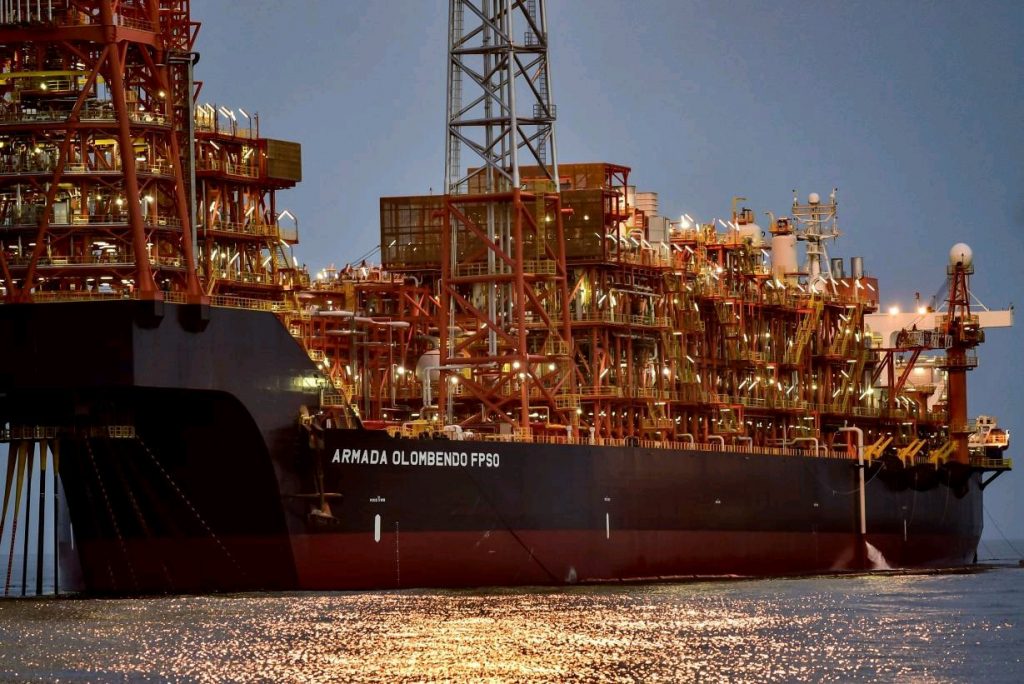
Eni puts Cabaça North on stream on Block 15/06 offshore Angola
Following Cuica in July this year, Eni has now achieved first oil from Cabaça North on Block 15/06 offshore Angola. Both fields are tied back to the Olombendo FPSO commissioned back in 2017 to initially develop the Cabaça Southeast and Cabaça Central UM8 fields on the license’s East hub. While Cabaça North was always going to be part of the East hub’s second phase of development, several additional fields were discovered by Eni over the past three years and are now being successfully tied-back under the company’s “infrastructure-led” exploration strategy (ILX). Source: MinFin Angola Ndungu will be the next discovery to achieve first oil within the coming months but tied back to the N’Goma FPSO on the block’s West hub. Meanwhile, Cabaça North will help in maintain output from Block 15/06 where production averaged only 100,000 bopd in H1 2021 compared to a combined capacity of 180,000 bopd across both FPSO vessels. Block 15/06 remains a very lucrative asset for Eni and Sonangol with strong upside potential. As of December 2020, 142.2m barrels had been produced from the West Hub (N’Goma FPSO) with remaining reserves estimated at 174m barrels, while 85.7m barrels had been produced from the East Hub (Armada Olombendo FPSO) where remaining reserves were estimated at 159.8m barrels. As part of its ongoing Partial Divestment Process, Sonangol is currently negotiating the sale of up to 10% of its interest in Block 15/06. Angola is currently sub-Saharan Africa’s most dynamic deep-water subsea market with majors such as TotalEnergies, Eni and BP involved in several subsea tiebacks and infill projects to maintain and increase output from existing production hubs. The country continues to be faced with declining output despite recent increase in production in July and August. Angola has produced an average of 1.143m barrels of oil per day (bopd) between January and August this year according to the ANPG. Its OPEC quota for September is set at 1.348m bopd. Full details on Block 15/06 are available in the “Projects” section within your Hawilti+ research terminal. More information on the Angolan oil & gas market is also available in Hawilti’s latest H1 2021 report on Angola.
Read more »
Africa Oil sets new plateau target for $3.4bn Project Oil Kenya – seeks partner prior to FID
Canadian junior African Oil Corp. has announced today a new production plateau of 120,000 barrels of oil per day (bopd) from Blocks 10BB and 13T onshore Kenya, up from the previous estimate of 100,000 bopd. Both licenses are located within the South Lokichar basin and are known as Project Oil Kenya, which Africa Oil Corp. intends to develop with its current partners TotalEnergies and Tullow Oil. The revised target notably follows changes in the project’s development concept in order to make it more commercially and environmentally viable. The revised project has also reduced the overall unit cost from $31/bbl to $22/bbl, making the project more attractive in a lower oil prices environment. Africa Oil expects a gross oil recovery of 585m barrels over the life of the field following the audit of the resource position by Gaffney, Cline & Associates. Phase 1 would initially target the development of the Ngamia, Ekales, Amosing and Twiga (NEAT) fields. Future phases would eventually focus on additional exploration potential within the 10BB/13T licenses while bringing the 10BA license acreage into production. Compared to the previous field development plan, we have a more economically robust project, which I am confident is more attractive to potential new partners. Keith Hill, President & CEO, Africa Oil Corp. The new development concept notably entails a 130,000 bopd facility along with an increase of the pipeline size from 18’’ to 20’’. The three joint-venture partners still expect to submit a final field development plan (FDP) by the end of this year in order to secure a license extension. However, the taking of a final investment decision (FID) is unlikely until they have secured a new strategic partner, likely to take over Tullow Oil’s stake in the project. As it stands, the project is expected to require $3.4bn in investment, including $2bn for its upstream component and $1.4bn for the pipeline. Project Oil Kenya has in fact already produced 450,000 barrels via an early oil pilot scheme that was operational from June 2018 to June 2020. Oil was produced from the Amosing and Ngamia fields then trucked from Turkana to Mombasa. Full details on Project Oil Kenya are available in the “Projects” section within your Hawilti+ research terminal.
Read more »